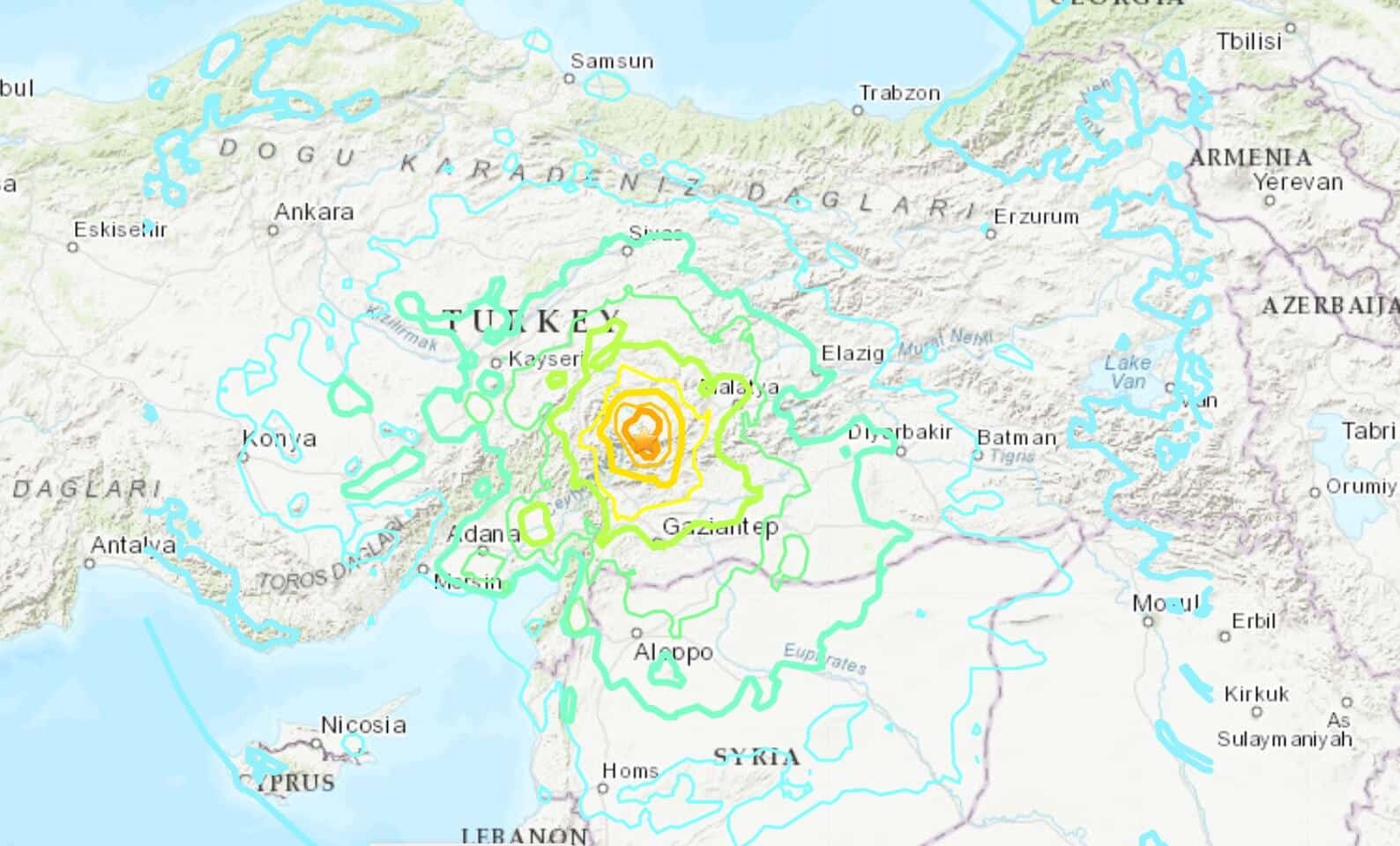This is what the US Geological Service website details following two strong earthquakes in Turkey and northern Syria within eight hours with magnitudes of 7.8 and 7.5 respectively. Much destruction in Aleppo in Syria, even though parts of it are still destroyed due to the civil war, and in Diyarbakir in Turkey

Update, 6/2/23 time 12:00 So far about 1,500 dead have been counted in Turkey and about a thousand more in Syria, the number will increase a lot in view of the great destruction caused and the high number of missing persons.
The Middle East sits on seams between five tectonic plates and is therefore saturated with earthquakes. This is what the US Geological Service website details following two strong earthquakes in Turkey and northern Syria within eight hours with magnitudes of 7.8 and 7.5 respectively. Much destruction in Aleppo in Syria, even though parts of it are still destroyed due to the civil war, and in Diyarbakir in Turkey.
At approximately three o'clock in the morning (Israel time) an earthquake of magnitude 7.8 occurred in southern Turkey and northern Syria. Eight hours later another 7.5 magnitude earthquake occurred
A powerful earthquake with a magnitude of 7.8 on the Richter scale that hit southern Turkey and northern Syria at four o'clock in the morning today (Monday) local time (three o'clock in the morning Israel time), caused the death of more than 600 people according to the official figures but due to the extent of the destruction in many cities , the number may be much higher. About eight hours later, a strong aftershock occurred - magnitude 7.5. In addition to the many ruins, the rescue teams are also dealing with harsh winter weather conditions.
It was reported that buildings collapsed in a cross-border area that stretched from the cities of Aleppo and Hama in Syria to Diyarbakir in Turkey - where about 2 million people live. Turkey's Vice President Fuat Otkay said a hospital collapsed in the city of Iskenderun on the Mediterranean coast, but no casualties were reported there.
"Unfortunately, at the same time, we are also struggling with extremely difficult weather conditions," Oktai told reporters.
The Middle East region has a history of strong earthquakes, and has recorded a number of earthquakes over 7.5 on the Richter scale in the past. Some of the most prominent and powerful earthquakes in the Middle East have occurred in recent decades. The Tabas earthquake in Iran in 1978, with a magnitude of 7.8, caused extensive damage and loss of life.
The earthquake in Armenia in 1988, which had a magnitude of 6.8 and resulted in the death of over 25,000 people. Another earthquake in Iran in 2003, with a magnitude of 6.6 and resulted in the death of over 26,000 people.
"In Israel, a large earthquake occurs on average every 80 years, with the last one being in 1927. We are currently in the zone of statistical error," said Dr. Avi Shapira in 2010, who was then chairman of the inter-ministerial steering committee for earthquake assessments.
In the same earthquake in 1927, large parts of almost all the cities of the country were destroyed, most notably Safed and Jericho, which lies on the Dead Sea rift.
On the US Geological Survey (USGS) website It is explained that the Middle East and the surrounding area are tectonically active due to the presence of four main tectonic plates (Arabia, Eurasia, India and Africa) and one smaller tectonic block (Anatolia). The geological development of the area is the result of various tectonic processes such as subduction, plate movement in faults, mountain building and expansion of the Earth's crust. The mountain building in northern Pakistan and Afghanistan results from the collision of the Indian plate and the Eurasian plate. Earthquakes in the region are mainly due to plate tectonics and occur in the Pamir-Hindu-Kush Mountains and the Suleiman Ridge in southeastern Afghanistan and western Pakistan.
The possibility that a chain of earthquakes will be triggered by a single earthquake is known as an earthquake trigger. It occurs when a strong earthquake changes the pressure in the earth's crust and leads to activation of nearby faults. However, it is difficult to predict whether an earthquake will trigger a series of earthquakes, and if so, when and where these earthquakes will occur.
More of the topic in Hayadan:
- The history of earthquakes in the Land of Israel
- The first geological map of its kind of the young copies in the Sea of Galilee marks the places prone to earthquakes
- Things donors know: Can animals predict earthquakes?
- Drilling at the bottom of the Dead Sea records 220,000 years of earthquakes
- Archaeological evidence of an earthquake mentioned in the Bible
- Machine learning of atmospheric phenomena may improve earthquake prediction

One response
https://earthquake.usgs.gov/earthquakes/tectonic/images/middleeast_tsum.pdf
Thanks